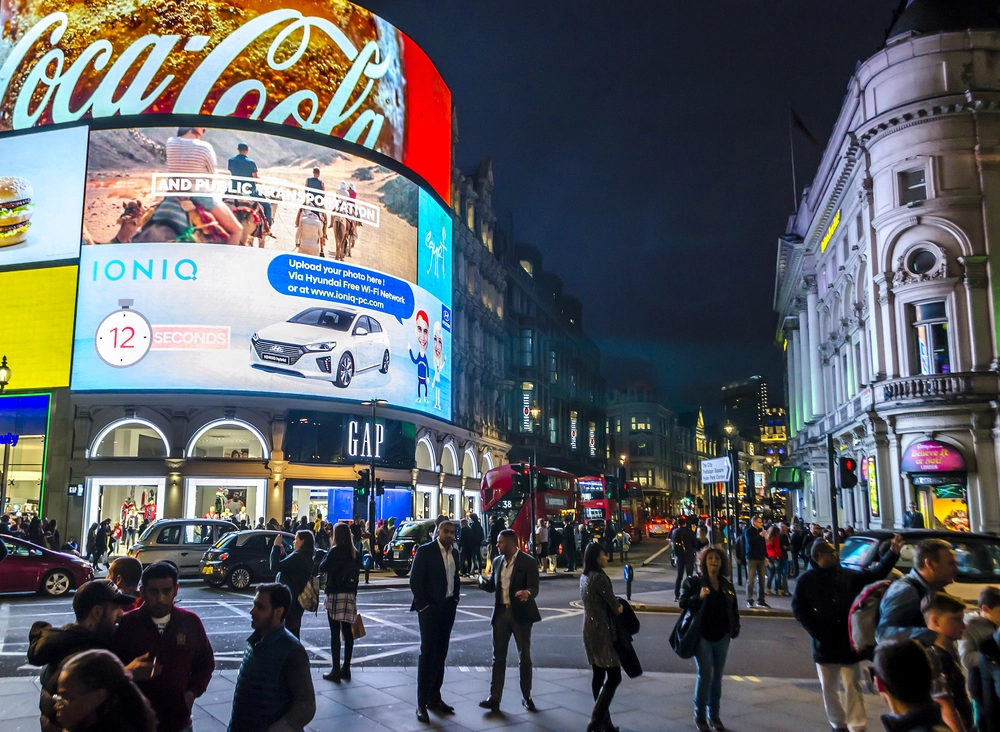
Every Lidl helps - Lidl wins High Court battle against Tesco over Clubcard logo


Lidl has recently won its High Court battle against the UK's largest supermarket, Tesco, over its use of the Tesco Clubcard logo, which Lidl considered infringed its own logo.
The case raised some interesting issues including whether Lidl had been "evergreening" its wordless logo trade mark by refiling it every 5 years to circumvent rules on non-use, as well as whether this trade mark had been subject to "use" through the general use of trade mark in conjunction with the trade mark "Lidl".
The Dispute
Lidl relied upon its trade mark rights in relation to two versions of the Lidl logo: a logo which includes the word “Lidl” (“the Mark with Text”) and a logo without that word (“the Wordless Mark”) as set out below:

Lidl has always operated in the UK under the Mark with Text which appears throughout its stores, on advertising and on its products. It did not use the Wordless Mark by itself but always in conjunction with the word mark, Lidl.
Lidl's complaint concerned the icons adopted by Tesco for its 'Clubcard Prices' promotion scheme. This features a blue square containing a centred yellow circle set within it, which sometimes appears with a price figure with the text such as "Clubcard Price" to indicate a particular promotion (the "CCP Signs") (see below).

Lidl sued Tesco for trade mark infringement, passing off and copyright infringement over the use of the CCP Signs.
Whilst Tesco denied the claims, it also pursued a counterclaim that the Wordless Mark should be declared invalid or revoked for lack of distinctive character, non-use and bad faith.
In brief, the Court held that Tesco's use of the CCP Signs amounted to trade mark infringement of both Lidl's Mark with Text and the Wordless Mark, as Tesco had taken unfair advantage of Lidl's reputation and caused detriment to the distinctive character of these marks. The Court found that Tesco's actions also amounted to passing off and infringement of copyright. However, Tesco's counterclaim succeeded in part and some of the Wordless Marks were invalidated.
Trade Mark Infringement
The primary date for assessment of trade mark infringement was September 2020, when the use of the CCP Signs commenced by Tesco.
Lidl brought a claim under section 10(3) Trade Marks Act 1994 ("TMA 94"). In short, this required Lidl to show that it had a reputation for both its marks and Tesco's use of an identical or similar mark took unfair advantage of its reputation or was detrimental to the distinctiveness or repute of its mark.
The judge found that
The overall impression formed in the mind of the average consumer is of similarity between the Mark with Text and the CCP Signs. The judge focussed on the visual and conceptual comparison between the Mark with Text and CCP Signs, whilst the text represents an important point of difference, it does not have the effect of extinguishing the “strong impression of similarity conveyed by its backgrounds in the form of the yellow circle, sitting in the middle of the blue square”. Members of Tesco’s internal team had identified such similarity between the Mark with Text and the CCP Signs during the development phase in 2020.
Although confusion is not required there was clear evidence of both origin confusion and price comparison confusion amongst the public, alongside the internal recognition by Tesco of the potential for confusion. The judge found support in her view from Lidl’s survey evidence. This showed unprompted messages to Tesco or Lidl from customers after they made the connection to Lidl following the launch of the CCP Signs. This weighed “strongly in favour of Lidl’s case”.
- Whilst it is difficult to evidence a change in economic behaviour, Lidl was able to establish detriment, through its evasive action, where it ran a corrective marketing campaign, to demonstrate the higher prices of Tesco Clubcard protected products compared to those of Lidl.
- Lidl’s evidence (unchallenged by Tesco) showed the dilution of Lidl’s brand. Until Tesco started using the CCP Signs, no other supermarket used a logo that looked anything like Lidl’s and that Tesco made “prolific use of the CCP Signs in its stores and all major marketing channels”.
- The position on infringement was the same for the Wordless Mark and the Mark with Text.
- A YouGov survey provided strong evidence that the Wordless Mark, used on its own, demonstrates exclusive origin and is perceived by a significant proportion of consumers to indicate the goods and services of Lidl. The Survey of grocery shoppers from a nationally representative demographic was used to deduce the Wordless Mark’s distinctive character. 1,252 grocery shoppers in the UK were shown an image of the Wordless Mark and asked, “What do you think this image is?” 73% of responses mentioned Lidl alone while another 2.3% mentioned Lidl with another brand.
The judge found that
The overall impression formed in the mind of the average consumer is of similarity between the Mark with Text and the CCP Signs. The judge focussed on the visual and conceptual comparison between the Mark with Text and CCP Signs, whilst the text represents an important point of difference, it does not have the effect of extinguishing the “strong impression of similarity conveyed by its backgrounds in the form of the yellow circle, sitting in the middle of the blue square”. Members of Tesco’s internal team had identified such similarity between the Mark with Text and the CCP Signs during the development phase in 2020.
Although confusion is not required there was clear evidence of both origin confusion and price comparison confusion amongst the public, alongside the internal recognition by Tesco of the potential for confusion. The judge found support in her view from Lidl’s survey evidence. This showed unprompted messages to Tesco or Lidl from customers after they made the connection to Lidl following the launch of the CCP Signs. This weighed “strongly in favour of Lidl’s case”.
- Whilst it is difficult to evidence a change in economic behaviour, Lidl was able to establish detriment, through its evasive action, where it ran a corrective marketing campaign, to demonstrate the higher prices of Tesco Clubcard protected products compared to those of Lidl.
- Lidl’s evidence (unchallenged by Tesco) showed the dilution of Lidl’s brand. Until Tesco started using the CCP Signs, no other supermarket used a logo that looked anything like Lidl’s and that Tesco made “prolific use of the CCP Signs in its stores and all major marketing channels”.
- The position on infringement was the same for the Wordless Mark and the Mark with Text.
- A YouGov survey provided strong evidence that the Wordless Mark, used on its own, demonstrates exclusive origin and is perceived by a significant proportion of consumers to indicate the goods and services of Lidl. The Survey of grocery shoppers from a nationally representative demographic was used to deduce the Wordless Mark’s distinctive character. 1,252 grocery shoppers in the UK were shown an image of the Wordless Mark and asked, “What do you think this image is?” 73% of responses mentioned Lidl alone while another 2.3% mentioned Lidl with another brand.
Passing Off
To succeed in passing off, Lidl needed to show:
- Goodwill or reputation attached to the goods and services in the mind of the purchasing public by association with the identifying "get-up" so that the get-up is recognised as distinctive of Lidl's goods and services.
- A misrepresentation by Tesco to the public (whether intentional or not) leading or likely to lead the public to believe that the goods and services offered by Tesco were in fact goods and services offered by Lidl.
- That it suffers, or, in a threatened or imminent action, that it is likely to suffer damage by reason of the erroneous belief engendered by Tesco's misrepresentation that the source of the Tesco's goods or services is the same as the source of those offered by the Lidl.
Lidl argued that due to the goodwill established by Lidl a substantial number of customers would be deceived that Tesco price matched or offered the same value as Lidl by the CCP Signs and as such products sold by Tesco shared the qualities of those of Lidl.
The judge concluded that:
- The UK public recognises the Lidl Marks (the Mark with Text and the Wordless Mark) as indicating Lidl's goodwill and Lidl's goodwill includes its reputation as a discounter that offers goods at low prices.
- A substantial number of consumers have been deceived by the link being made by consumers between the CCP Signs and the Lidl Marks based on the evidence from the Lidl Vox Populi and Survey (which the judge regarded as being the "tip of the iceberg") and due to Lidl's prices being generally lower than those of Tesco.
- Lidl had suffered damage by Tesco's misrepresentation and harm caused by the deception.
As such, the Judge held that Lidl's claim in passing off succeeded.
Copyright Infringement
To prove copyright infringement Lidl needed to show:
- Copyright subsists in each of: (i) the Mark with Text and/or (ii) the Wordless Mark as an artistic work (the "Works").
- Copyright in each of the Works is owned by Lidl.
- Tesco copied the Works or either of them and, if so, that Tesco copied a substantial part of the Works.
The judge considered the evidence and held Tesco had infringed Lidl's copyright in the original artistic works of the Mark with Text and the Wordless Mark because:
- Both of the Works were capable of being artistic works as they fall within the category of graphic works.
- The Mark With Text involved a combination of elements and the act of bringing together the Lidl text with the yellow circle and blue background was "an act that involved skill and labour" and "copying was a function of the strong desire on the part of Tesco (as evidenced in its internal documents) to convey the message of “value”, a message which Lidl’s logo already conveyed so effectively".
- A substantial part had been copied in the CCP Signs design, given the blue background and yellow circle.
- Tesco had copied with a view to enhancing the value perception of Tesco’s own Clubcard Prices offering by adopting a get-up, in the form of a blue background and yellow circle, which already had a proven association with a strong value proposition (i.e. the Lidl Logo) in the minds of consumers.
Defences and Counterclaims
Tesco's counterclaim concerned the Wordless Mark and raised the following issues:
- If the Wordless Mark has been used in relation to the goods and services for which it was registered.
- If use of the Mark with Text was use of the Wordless Mark in a form that doesn’t alter its distinctive character.
- If the Wordless Mark has distinctive character.
- If any of the registrations for the Wordless Mark were filed in bad faith because there was no intention to use it as a trade mark when each was applied for.
Tesco argued that each of the registrations for the two marks were liable to be declared invalid because they were applied for in bad faith. Tesco claimed that the Wordless Mark was a “legal fiction” and had never been used and there was not a bona fide intention by Lidl to use the Wordless Mark. It was intended to be solely used as a weapon in legal proceedings rather than being used as a trade mark.
As part of these arguments, Tesco claimed that the Wordless Mark had been “evergreened” in order to avoid cancellation for non-use and separately that it lacked distinctive character.
Lidl adduced no evidence as to the reputation and goodwill of the Mark with Text in 1995, or as to the perception of the average consumer at the time, or as to its intentions at the time of the application.
For the reasons set out above and with regard to those below the Judge found the applications for the Wordless Mark in 1995, 2002, 2005 and 2007 were filed in bad faith. Lidl failed to provide any evidence of an intention to use the Wordless Mark in the subsequent registrations (2002, 2005 and 2007) and there was no dispute that these duplicated, in part, the goods and services of the Wordless Mark registered in 1995.
Trade marks are vulnerable to cancellation for non-use if they have not been used for a period of five years.
The practice of “evergreening” means the refiling of trade marks that are identical to previously registered trade marks by the same owner in order to circumvent the obligation in opposition proceedings to prove genuine use of an earlier mark after it has been registered for five years (as seen in the case of Hasbro Inc. v EUIPO-Case T‑663/19-MONOPOLY).
The onus fell on Lidl to provide a “plausible explanation of its commercial logic and objectives” when it filed registrations for the Wordless Mark in 1995, 2002, 2005, 2007 and in 2021, and that a finding of bad faith would be made if unable to do so. The Judge found the evergreening of these marks supportive of the finding of bad faith.
The Judge rejected the suggestion that the 2021 Application supported Tesco’s case on evergreening, or that there is any basis on the evidence for a finding that, by this stage, Lidl genuinely believed that it was using the Wordless Mark and Lidl believed it was not vulnerable to revocation. The Judge held that by 2021 the Wordless Mark enjoyed its own reputation.
Tesco argued that what separated the Wordless Mark from the Mark with Text was the use of the word Lidl superimposed onto it. Lidl argued that use of the Mark with Text also constituted use of the Wordless Mark. The Judge held that, rather like the mark in the Specsavers case against Asda, (Specsavers International Healthcare Ltd & Ors v Asda Stores Ltd (Rev 1) [2014] EWCA Civ 1294) that the Wordless Mark was perceived as a trade mark by the relevant public and served to identify the goods and services of Lidl. It was not simply seen as background but as a logo or brand in its own right and is distinctive and therefore the judge dismissed the counterclaim by Tesco that it lacked distinctive character. Furthermore, it had established genuine use of the Wordless Mark through use of the Mark with Text.
No genuine intention to use the Wordless Mark in 1995 was found, and the 2002, 2005 and 2007 registrations were designed to “evergreen” the 1995 Mark, to “avoid sanctions for non-use and to further the policy of registration of the Wordless Marks as a legal weapon”. These registrations duplicated goods and services from the 1995 Wordless Mark and was further proof that these registrations were made in bad faith as at the date of the application for the 1995 Mark and declared invalid. The 2021 application was not addressed by Tesco in its submissions to the court and was not considered to have been made in bad faith.
Whilst Tesco has indicated it will appeal the decision, this is the first UK case to refer to the practice of evergreening as bad faith in the UK following the Monopoly decision in the EU. It demonstrates that the UK courts will continue to be influenced by decisions coming from the EU post-Brexit.
Charlene Nelson, Senior Associate (Chartered Trade Mark Attorney)












